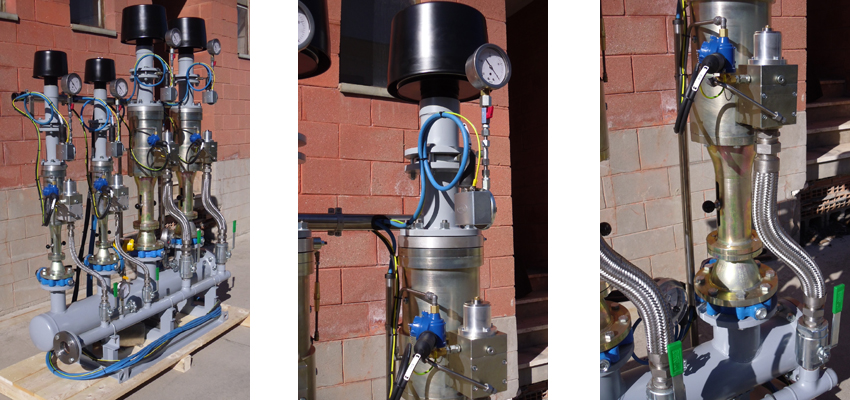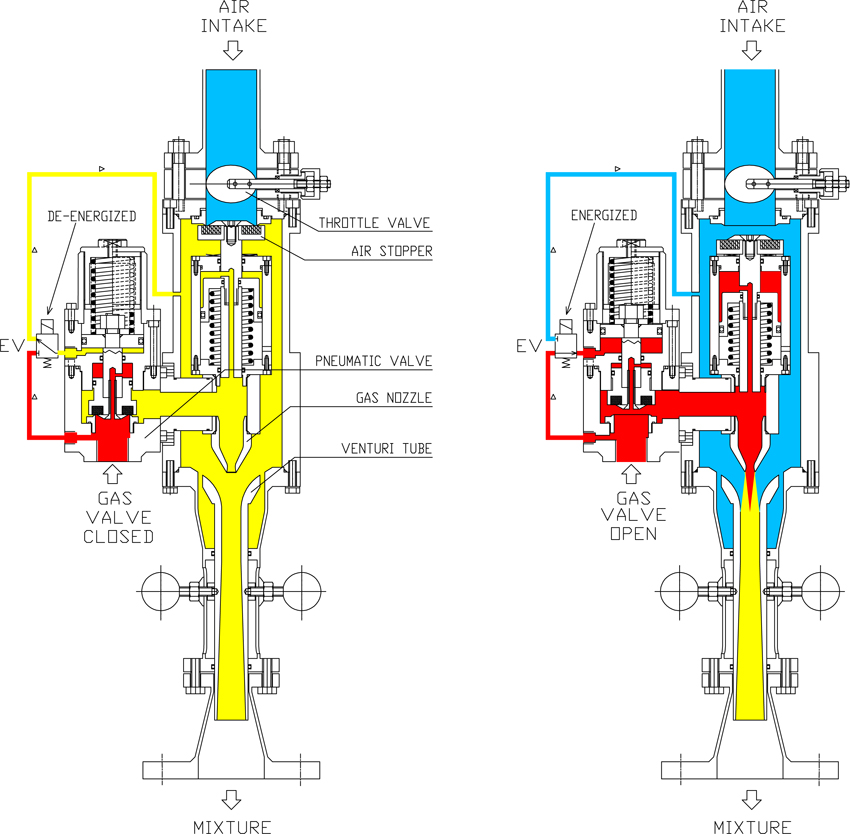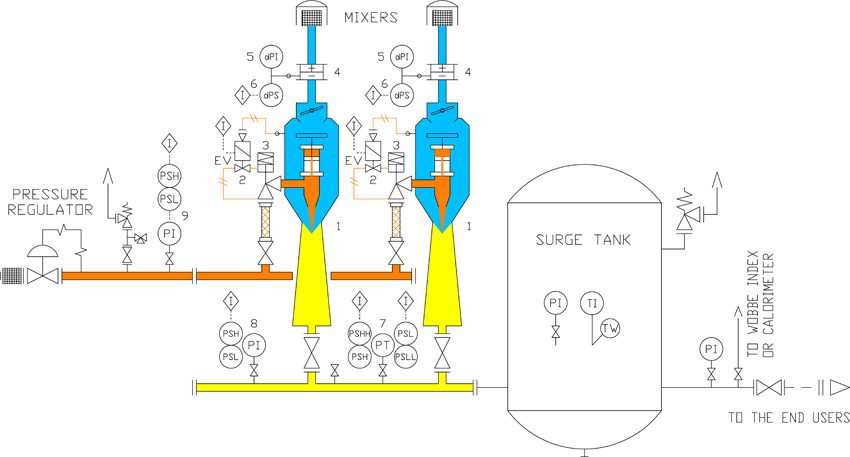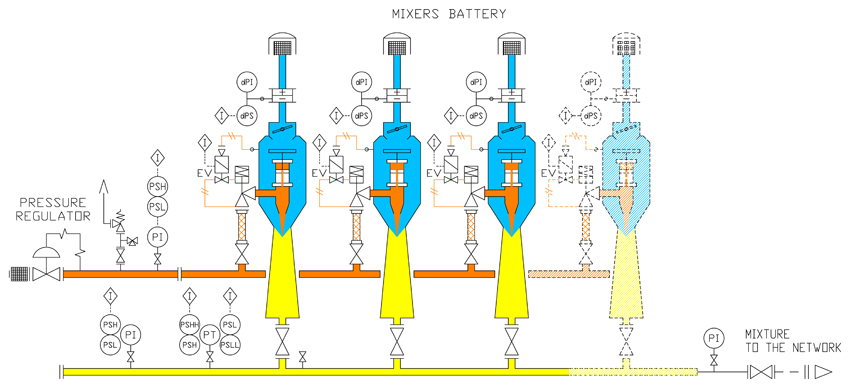VENTURI MIXERS "COMPACT" TYPE

When the solenoid valve EV is de-energized (left side of the drawing below), the motive gas (red zone) doesn’t flow to the actuator and therefore both pneumatic gas valve and air stopper are kept closed by means of springs. After the solenoid valve EV has been energized (right picture), the motive gas pressure (red zone) opens the pneumatic gas valve by means of its actuator and the gas starts flowing through the valve to the gas nozzle. In the same time the gas enters the chamber of the pneumatic air actuator, pulling the air stopper down so as to open the air port (orifice). Due to suction created by the gas flowing through the nozzle and the tube section (“venturi effect”), the ambient air is drawn into the mixer and blended with the gas inside the tube. The mixture produced is sent to the mixer outlet cone (section) thanks to the motive gas (energy) pressure. While the gas flow rate is always steady (due to steady gas inlet pressure and to fixed orifice of the nozzle ), the amount of air in the mixture can be adjusted by a throttle valve and checked by a differential pressure gauge, both placed on the air suction pipe. In this way is possible, at any time, to set the right Calorific Value of the mixture.

When the Mixers are mounted in a battery, the automatic functioning of the unit is managed by a PLC inside the Control Panel, as below described. The mixture outlet pressure is continuously checked from the PLC, through the Pressure Transmitter PT (pos. 7), and compared with four thresholds (PSLL , PSL, PSH, PSHH) inside the PLC memory. The thresholds are set around the pressure value required from the system. When, due to change in consumption, the pressure drops or rises till to reach the inner thresholds (PSL-PSH), the PLC activates the Mixers, according to a sequence which increases or decreases the mixture flow rate of a same quantity for each step, so as to keep the outlet pressure within the set range. On reaching the inner thresholds (PSH - PSL), the sequence moves of only one step, while if the pressure reaches even the outer ones (PSLL – PSHH), this means that flow rate variation of the previous step has not been enough and therefore the sequence speeds up, by carrying out more steps so as to restore fast the mixture pressure. In case of failure of the Pressure Transmitter, the contacts of the Pressure Gauge (pos. 8) will take over the unit control, by managing the Mixers like with the outer thresholds of the Transmitter (PSLL-PSHH).


